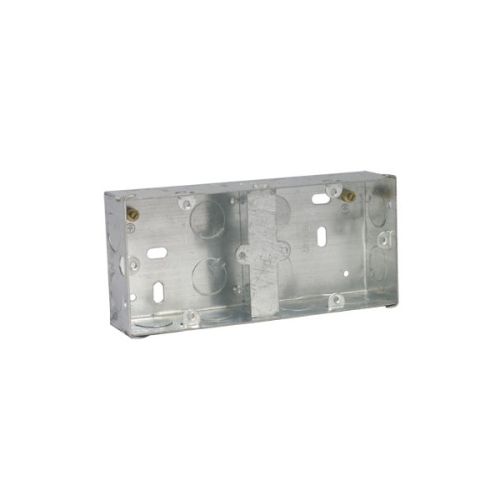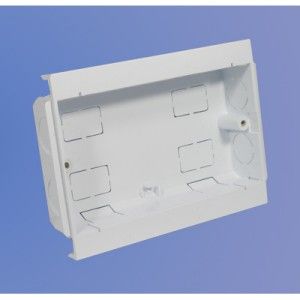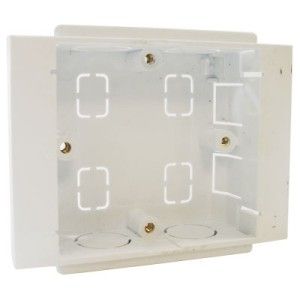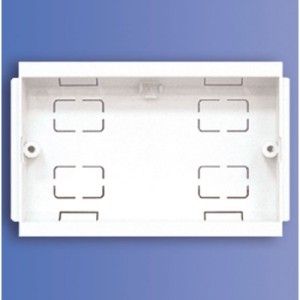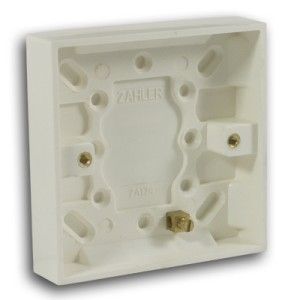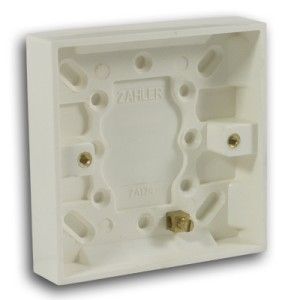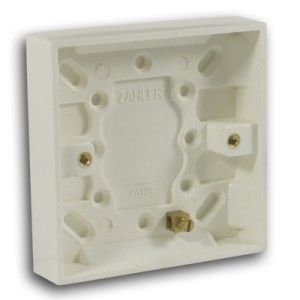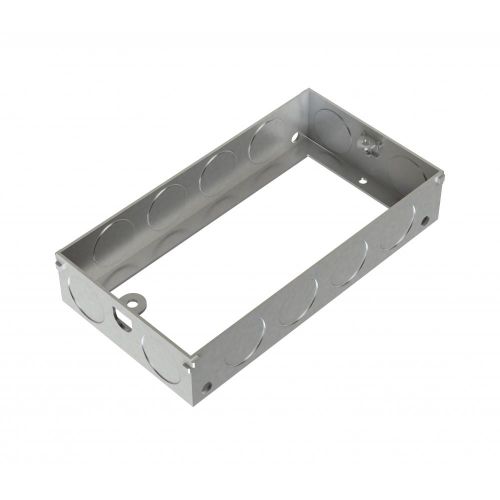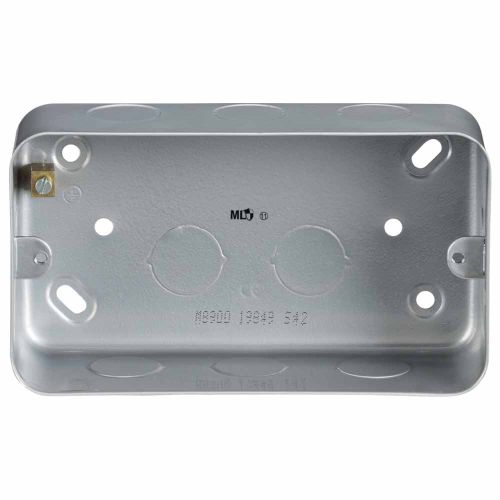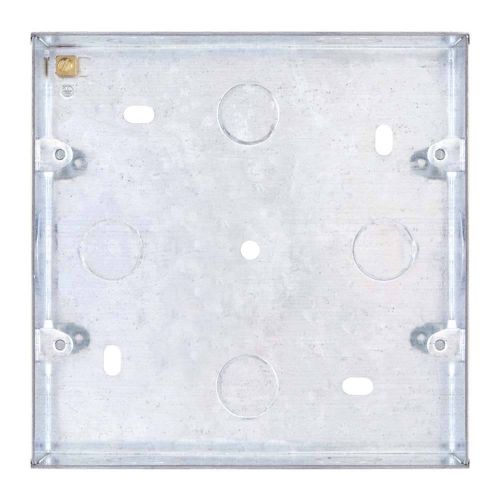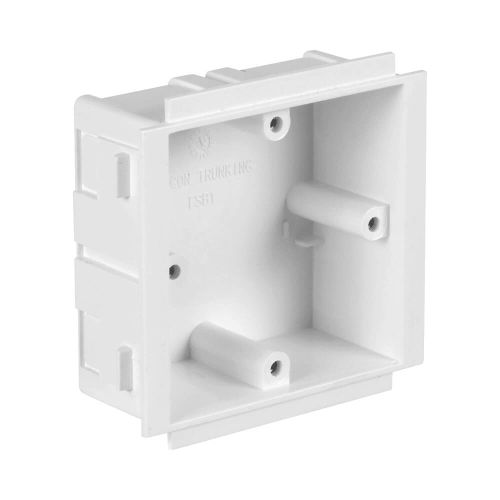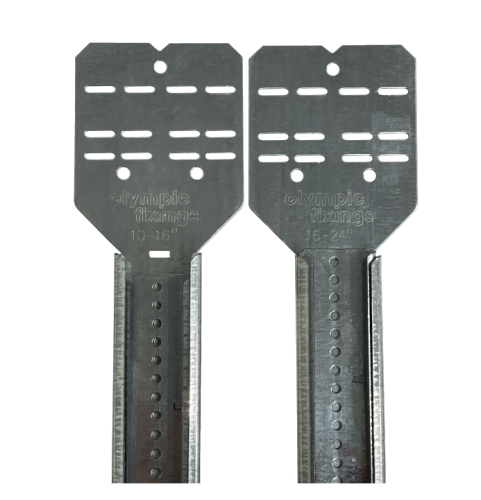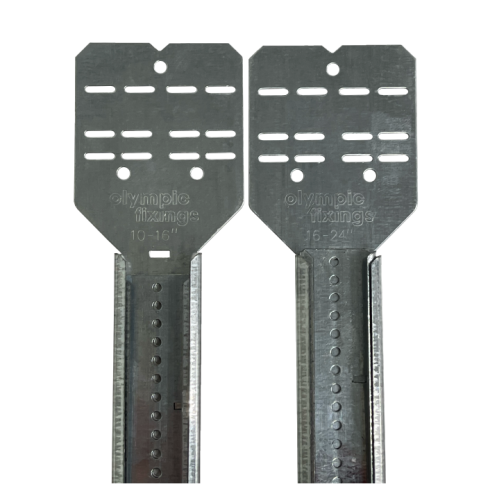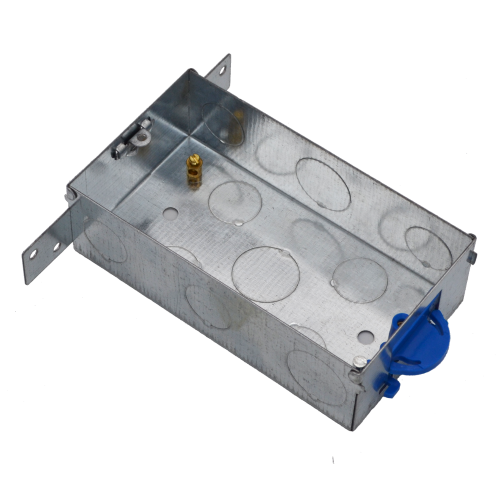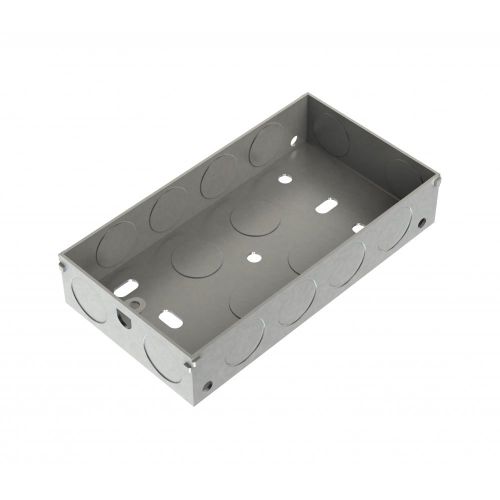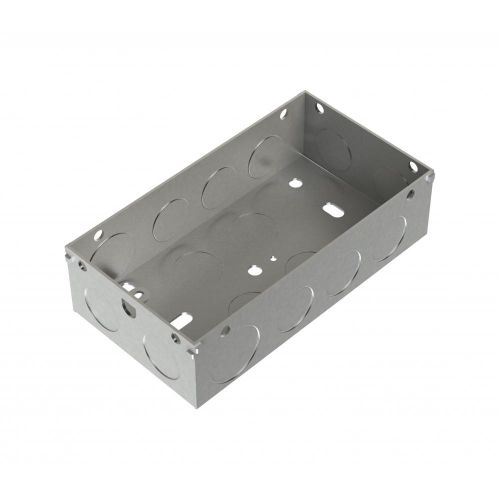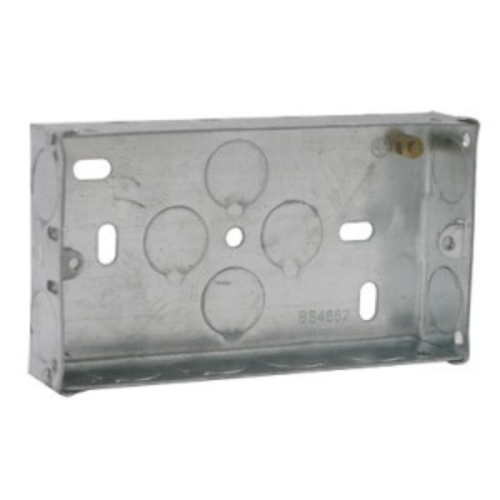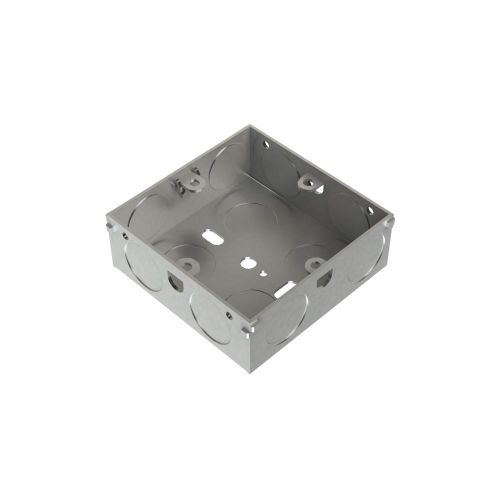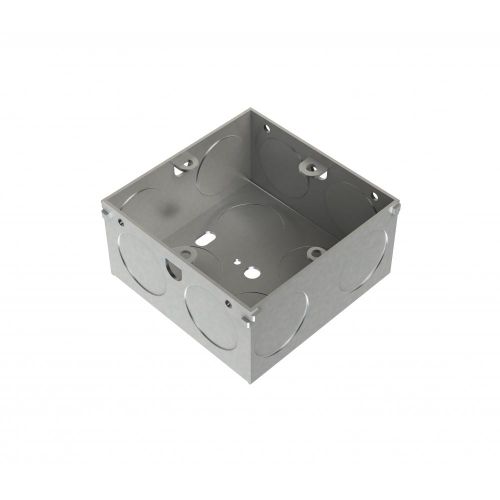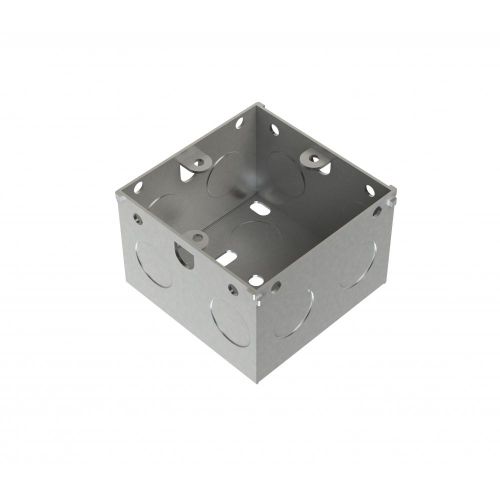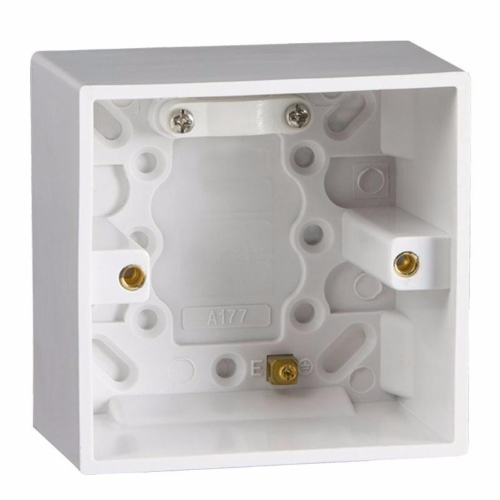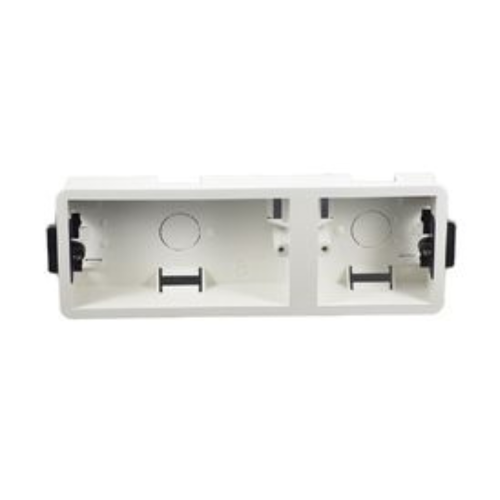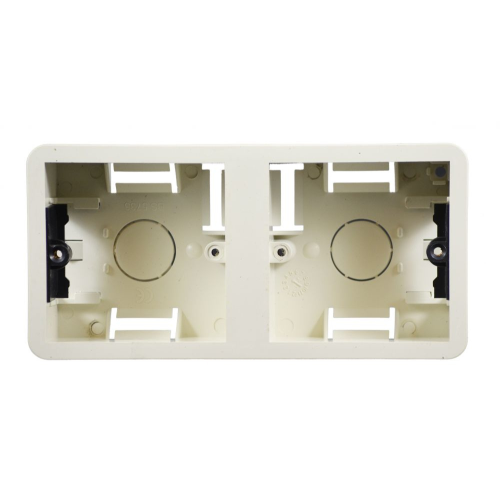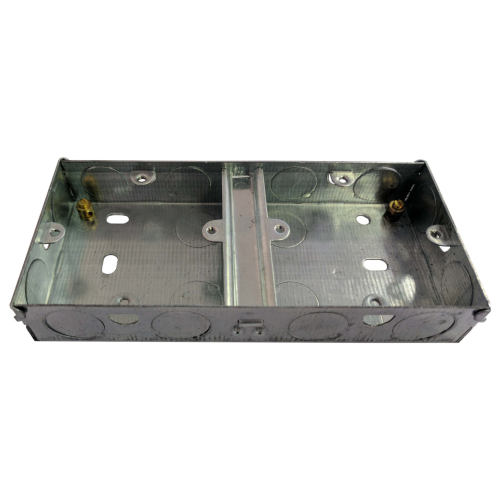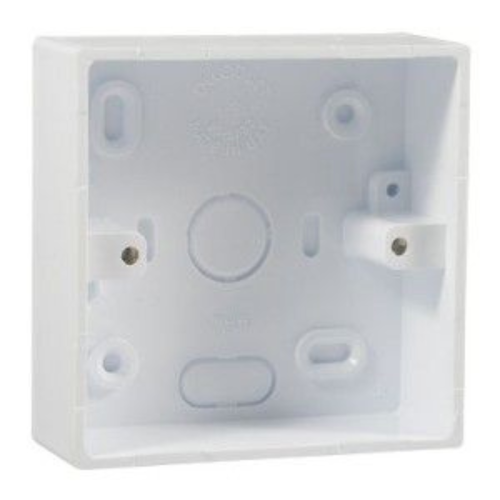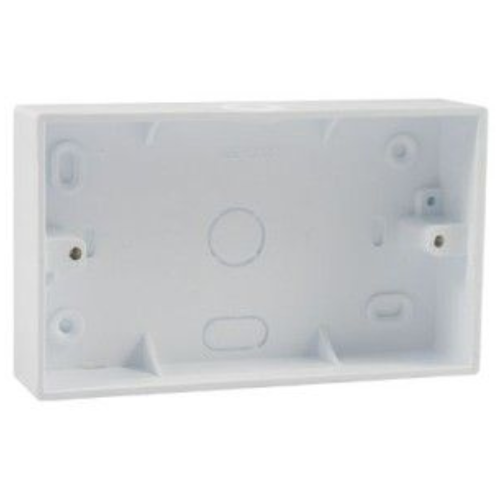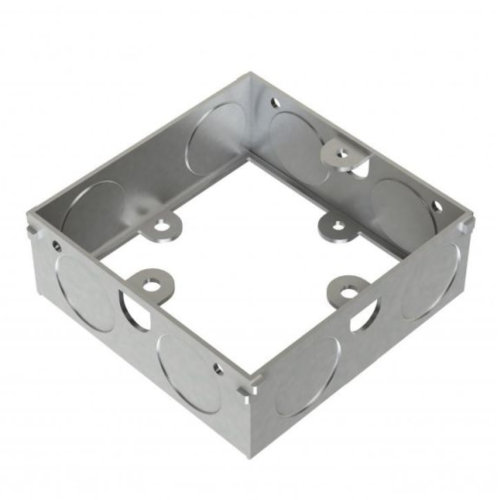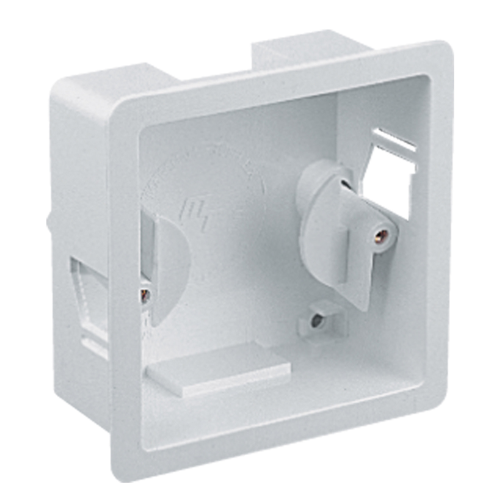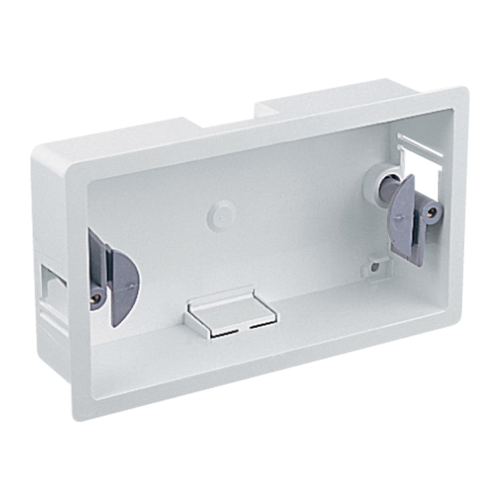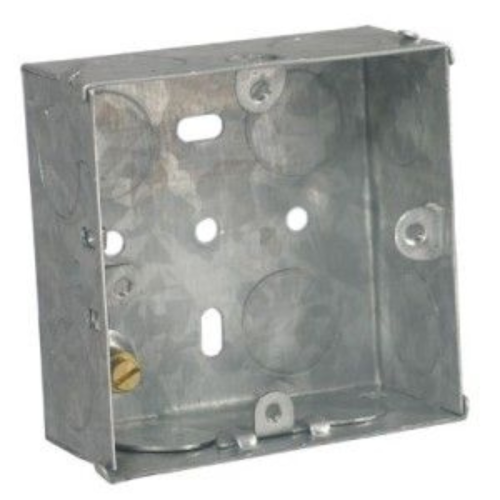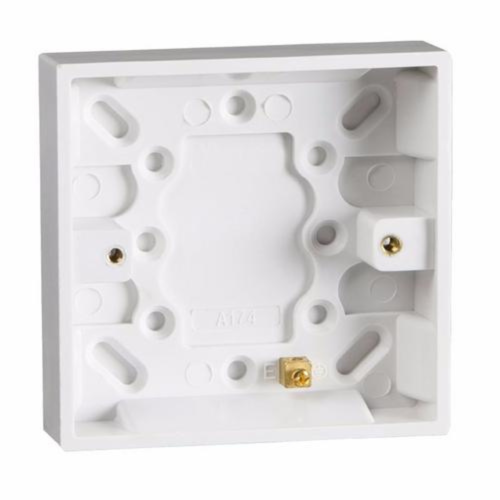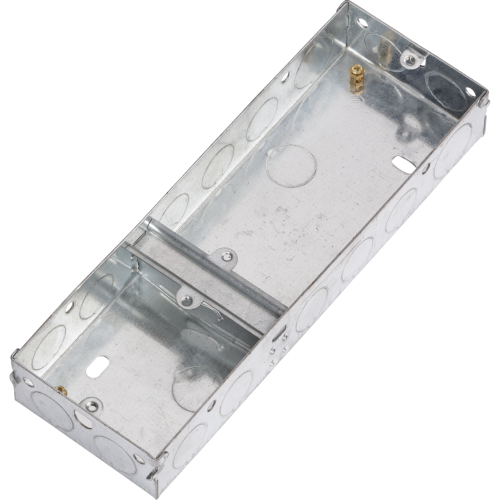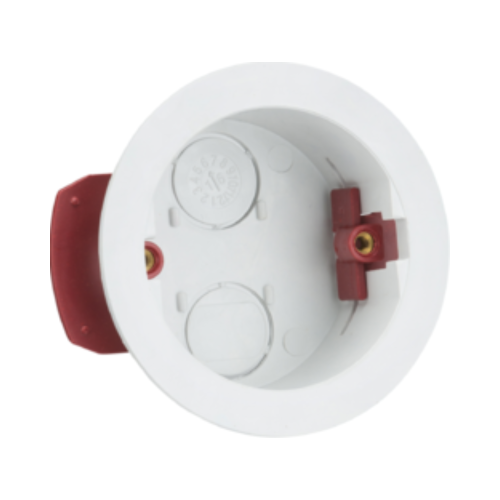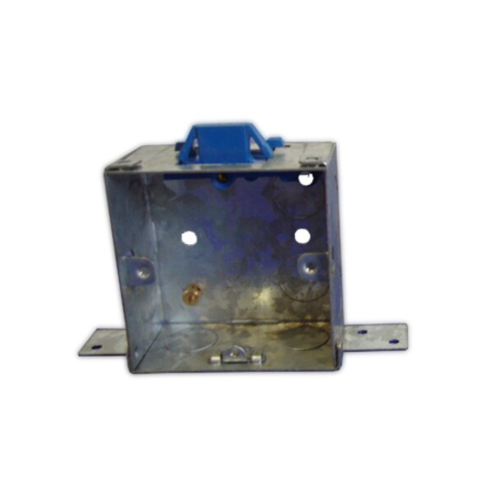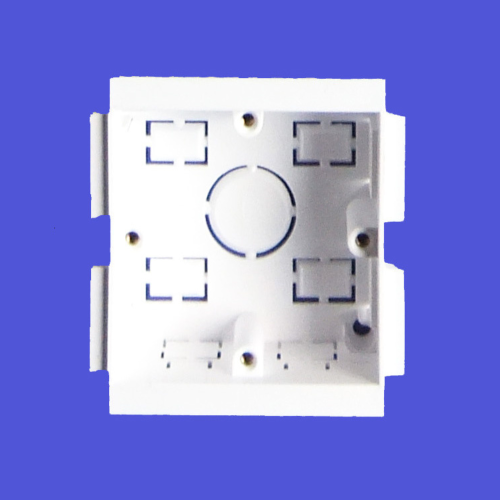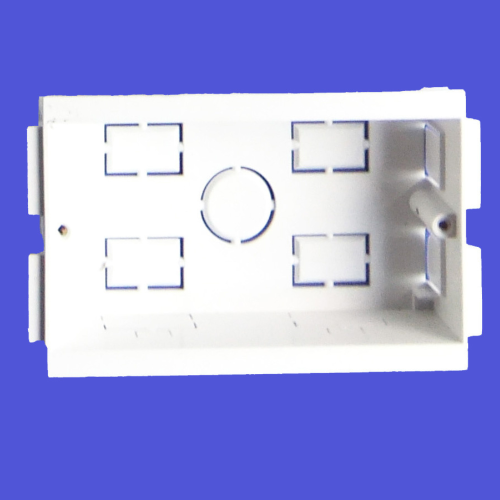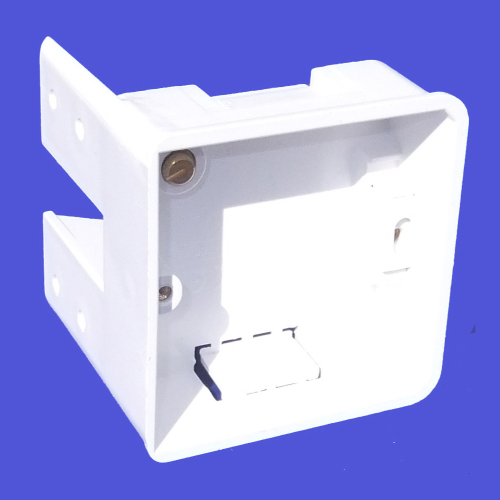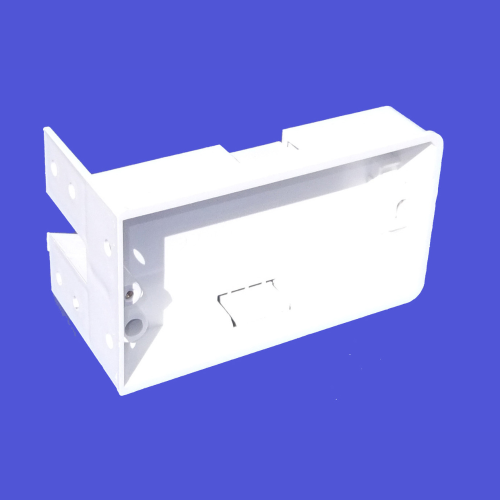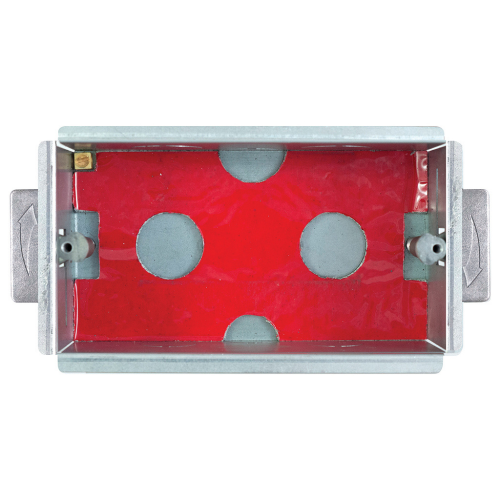PVC & Galvanised Socket Boxes
Electrical back boxes are metal or plastic boxes that are used to house and protect electrical wiring connections in a building. They are typically installed within the walls, floors, or ceilings and are used to mount light switches, power outlets, and other electrical fixtures.
The back box provides a safe and secure enclosure for the electrical wiring connections, protecting them from damage and reducing the risk of electrical shocks and fires. It also helps to contain any sparks or flames that may occur in the event of a fault or short circuit.
Back boxes come in different sizes and shapes to accommodate different types of electrical fixtures and wiring configurations. They can be flush-mounted or surface-mounted and may have different numbers of knockout holes to allow for the insertion of cables or conduits
To purchase the correct back box, you need to know the desired location and depth required. Our range includes:
- Steel Boxes & Extensions
- Dry Lining Boxes
- PVC Boxes
Which And Why?
Steel Boxes
Steel boxes are a type of electrical back box that is commonly used in commercial and industrial electrical installations. They are made of sturdy and durable steel and are designed to provide a secure and protective housing for electrical wiring and connections.
Steel boxes come in different shapes and sizes, including square, rectangular, and round, to accommodate different types of electrical fixtures and wiring configurations. They can also have different depths to allow for the insertion of different lengths of electrical cables.
Steel boxes are typically installed within the walls, floors, or ceilings of buildings using screws or other types of fasteners. They are designed to be tamper-resistant, preventing unauthorized access to the electrical wiring and connections.
One advantage of steel boxes is their durability and strength. They can withstand exposure to harsh environmental conditions and are resistant to damage from impact, vibration, and fire. Steel boxes are also easy to maintain and clean.
However, steel boxes can be heavier and more difficult to install than plastic boxes, and they may require additional tools and equipment for installation. Additionally, steel boxes can be more expensive than other types of back boxes, especially if they are made from high-quality materials or are designed for specialized applications.
Dry Lining Boxes
Dry lining boxes are a type of electrical back box that is designed for use with dry lining walls. Dry lining is a popular method of constructing internal walls in modern buildings, where a layer of plasterboard is attached to a timber or metal frame, leaving a cavity between the plasterboard and the original wall.
Dry lining boxes are shallow and are designed to fit into this cavity, allowing for electrical fixtures such as switches and sockets to be mounted flush with the plasterboard surface. This provides a neat and tidy appearance to the wall and reduces the amount of material required to install the fixture.
Dry lining boxes can be made from a range of materials, including plastic and metal. They are available in different sizes and shapes to accommodate different types of electrical fixtures and wiring configurations. They are typically installed using screws or other types of fasteners, which are inserted through the plasterboard and into the timber or metal frame behind.
PVC Boxes
PVC boxes, also known as plastic boxes, are a type of electrical back box that is commonly used in residential and light commercial electrical installations. They are made of durable, lightweight PVC (polyvinyl chloride) plastic and are designed to provide a safe and secure enclosure for electrical wiring and connections.
PVC boxes come in different sizes and shapes, including square, rectangular, and round, to accommodate different types of electrical fixtures and wiring configurations. They can also have different depths to allow for the insertion of different lengths of electrical cable.
PVC or plastic pattress boxes are easy to install and can be fixed to the wall, ceiling, or floor using screws or other types of fasteners. They are lightweight and can be cut or modified with basic hand tools, making them a popular choice for DIY installations.
Shop 2 gang back boxes, triple socket back boxes, and more from our Boxes & Enclosures selection here at Meteor Electrical for next-day delivery.
If you cannot find your desired size of on our website, please contact our sales team today.
Back Boxes
Single back box
Double back box
When to Use a Metal or Plastic Back Box?
Metal back box
PVC back box
FAQ's
- What Back Boxes are available?
- What are Steel Boxes used for?
- What are Dry Lining Boxes used for?
- What are PVC Boxes used for?
- Are Back Boxes required?
- Can I install the Back Box myself?
- What are back boxes?
- What is a triple socket box?
- What is a back box extension used for?
- Does a plastic back box need earthing?
- Do plug sockets need back boxes?
- What are the standard pattress box sizes?

